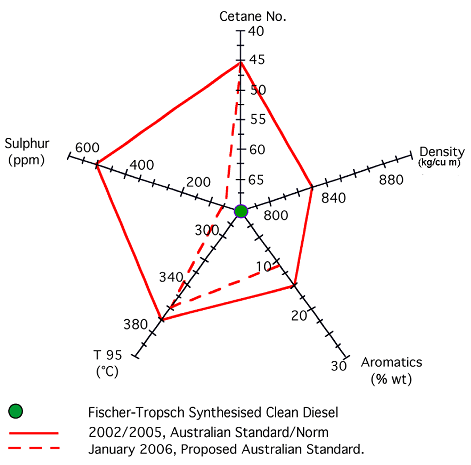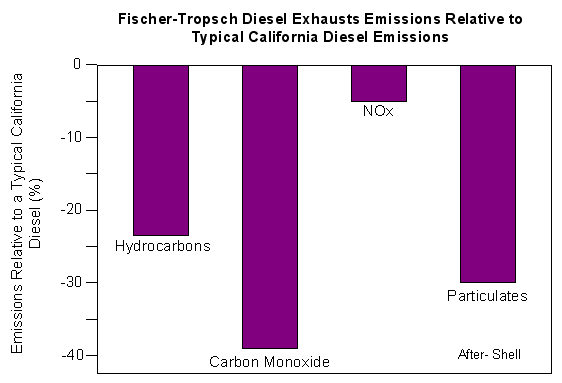Professor Ray Kearney’s contribution to On Line Opinion in March 2004 proposed the developed world (including Australia) switch from the use of traditional liquid fuels, based on petroleum, to bio-fuels that include ethanol and bio-diesel. Kearney’s contribution in November 2005 emphasised the danger of using petroleum-based fuels in terms of the adverse health effects that can be attributed to such fuels.
A reduction in poly-aromatic hydrocarbons (PAHs) and benzene in liquid transport fuels is a good step in reducing health hazards associated with the handling and use of liquid fuels that contain benzene and poly-aromatic hydrocarbons. It is a fact that petroleum-sourced liquid fuels do normally contain aromatic (benzene ring) compounds. In Australia, from 2005 petrol will contain less than 42 per cent PAH and from January 1, 2006 no more than one per cent by volume of benzene. Diesel, as sold in Australia, now commonly contains around 15 per cent PAH but from January 1, 2006, PAH will be a maximum of 11 per cent. Kearney, when keeping within the bounds of his expertise and skills, does make sense, since benzene and poly-aromatic hydrocarbons are recognised carcinogens.
Recommending that Australia and the rest of the developed world switch to bio-fuels to reduce the harm caused by traditional petroleum fuels is bordering on the ludicrous. Bio-fuels are an expensive play in terms of the cost of raw materials used in production, the energy required in producing and transporting those fuels, fuel efficiency and plant (vehicle) maintenance. The human cost of bio-fuels in terms of the use of arable land for the production of the sugarcane, oats, sunflower seeds and so on for producing those fuels would be unsupportable. If the true cost of bio-diesel were passed onto the end users, liquid transport fuels would be prohibitively expensive and have no market.
Advertisement
It is noted that in the March 2004 contribution Kearney recommends, “Assistance is needed in the general development of the bio-fuel industry. This includes new storages, crushers, refineries and associated infrastructure.” Here we have the call for massive subsidies and other government props, to support an unsupportable industry.
Kearney’s call for a reduction in pollutants emitted as vehicle exhausts is welcome. Given that the lowering or removal of benzene and poly-aromatic hydrocarbons, particulates, sulphur and nitric oxides (NOx) from vehicle exhausts is a good idea, other means to achieve this outcome besides the use of bio-fuels should be investigated. One source of liquid fuels that meet the criteria set out above are those produced through the Fischer-Tropsch (F-T) synthesis reaction, as developed in Germany in the 1920s and used to run Hitler’s war machine in the 1940s.
The F-T reaction is a bit of fancy chemistry that takes the products of coal gasification (hydrogen and carbon monoxide, known as syngas) and with the help of a catalyst turns them into liquid synthetic petroleum that contains NO nasty benzene/poly-aromatic type compounds. In the F-T reaction excess heat is produced. Much of this heat can be recovered and converted into electricity, in a fuels and electricity industrial complex, where good synergies are engineered into the total production system. This is a truly win-win situation for all energy users.
How good are F-T fuels?
Very good. From environmental, health, energy availability and maintenance stand-points, F-T fuels are very superior as demonstrated in the following figure.

Figure 1: F-T diesel environmentally related properties (as adapted from a Shell/Rentech publication.)
Advertisement
- Aromatics = Compounds containing benzene rings (~ the nasties). These include PAH (poly aromatic hydrocarbons and benzene).
- Cetane No. = A number that indicates how easily diesel combust. A high Cetane No. indicates good ignition and good vehicle performance (~ 46 minimum is the current standard).
- T95 = The temperature at which 95 per cent of diesel distils off. (~ Low T95 are desirable.)
The above figure has the position of F-T diesel in the centre of the plot and shows how F-T diesel exceeds the new Australian standard on diesel quality. Two axes, of particular interest, are the aromatics (benzene like compounds) and sulphur, i.e. both are zero. In the following figure (adopted from a Shell publication), exhaust characteristics for F-T diesel are shown.

Discuss in our Forums
See what other readers are saying about this article!
Click here to read & post comments.
15 posts so far.